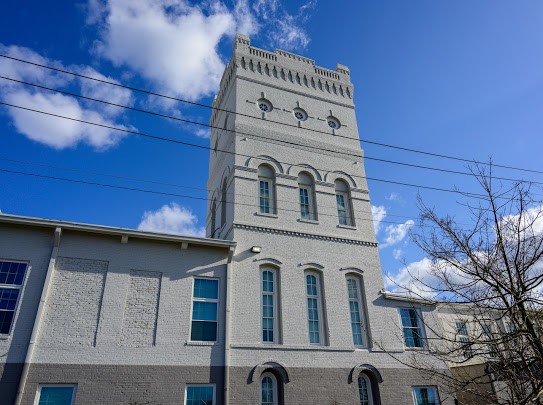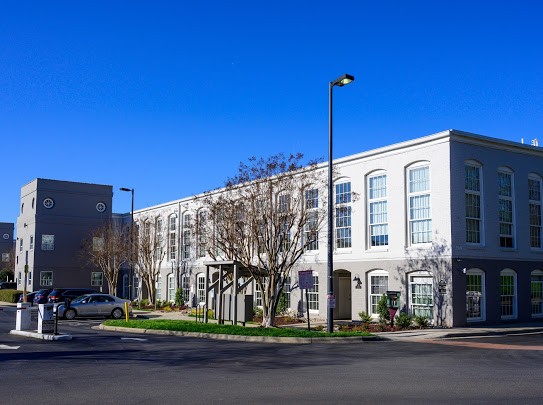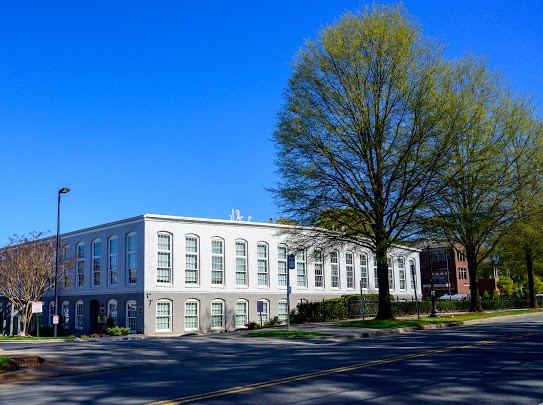Highland Park Mill #3
Introduction
Author-Uploaded Audio
Listen to a narration of this entry's description by Bridget Anderson.
Text-to-speech Audio
Images
View from the back of Highland Mill, adjacent to trail tracks

Highland Park Mill

Highland Park Mill

Backstory and Context
Text-to-speech Audio
In the 19th century, this terrain was nothing but farmland and swamps at the edges of the Rosedale Plantation, the Pfeiffer Estate, and the Wadsworth Farm. At the beginning of the 20th century, America’s industrial revolution was well underway and textile manufacturing was starting to move from its former centers in the northeast and midwest to the south. Three things contributed to this move; first the expansion of railway lines across the country, the second was the fact that many of the raw materials were being sourced in the south; and third the growth of collective bargaining power of labor unions. All of this prompted some of the “robber barons” of the industry to want to move their business to places like North Carolina where they thought they would find cheaper manufacturing costs due to a less politically active labor force.
The arrival of a railway line made Charlotte a prime location for the construction of new modern factories. It is estimated that there were about 500 textile mills within a 125-mile radius of Charlotte.
Three separate investors chose this area at the northern edges of Charlotte to build their textile mills. The first of these was Highland Park Mill #3, which began construction in 1903 on the new railway line (which is on what we might today think of as the back of the building.)
The complex takes the shape of a big letter "L" and was laid out in such a way so that raw cotton was dropped off at one end of the building and finished cloth was delivered at the opposite end. Along the way, the cotton was ginned, carded, spun into thread, dyed, and finally woven into fabric. This mill’s specialty was producing gingham, although it also dabbled in other fabrics especially during the two world wars.
When Highland Park #3 opened it was the area’s largest mill—a full 50% larger than the next one. This was also the first mill in Charlotte (and maybe the southeast) that was built to run on electricity. Stuart Cramer is also credited with coining the term “air conditioning” and this mill was one of the first in the region to feature that technology—although it wasn’t meant primarily to keep things cool, but rather to cleanse the air of cotton fibers which were a major fire hazard.
The mill shut down in 1969 and remained vacant for decades until it was refurbished into condos in 2014. Several of the residents have reported strange events in the former mill, too, leading some to speculate that it is haunted.
